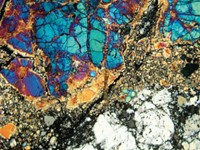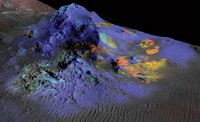Advertisement
Grab your lab coat. Let's get started
Welcome!
Welcome!
Create an account below to get 6 C&EN articles per month, receive newsletters and more - all free.
It seems this is your first time logging in online. Please enter the following information to continue.
As an ACS member you automatically get access to this site. All we need is few more details to create your reading experience.
Not you? Sign in with a different account.
Not you? Sign in with a different account.
ERROR 1
ERROR 1
ERROR 2
ERROR 2
ERROR 2
ERROR 2
ERROR 2
Password and Confirm password must match.
If you have an ACS member number, please enter it here so we can link this account to your membership. (optional)
ERROR 2
ACS values your privacy. By submitting your information, you are gaining access to C&EN and subscribing to our weekly newsletter. We use the information you provide to make your reading experience better, and we will never sell your data to third party members.
Origins Of Life
Cholesterol’s molecular fossil identifies Earth’s oldest large animals
Researchers use chemical analysis to solve one of paleontology’s big mysteries
by Alla Katsnelson, special to C&EN
September 20, 2018
| A version of this story appeared in
Volume 96, Issue 38
If you could travel back in time some 580 million years, you’d face a stark landscape of rocks and wide, braided rivers, lacking macroscopic animals or plants of any kind. Just 40 million years later, ancestors of many animal lineages existing today sprang to life in the Cambrian explosion. But in that intervening stretch 570–540 million years ago, toward the end of the geological Ediacaran period, a set of mysterious creatures populated Earth’s seabeds—and paleontologists have argued for decades about whether these organisms were animals; lichen; giant, single-cell amoeba-like organisms; or some other type of being.
The question is important because Ediacaran fossils “are the very first large fossils that appear in the entire geological record,” says Jochen Brocks, a paleobiogeochemist at Australian National University. “They sit between the world of microscopic organisms and the world of recognizable animals, and so they can give us a clue about how and when animals appeared on Earth.”
By analyzing the types of sterols present in a fossilized Ediacaran organism called Dickinsonia that was found with some of its soft tissue preserved, Brocks says his lab has now settled the debate: The fossil’s high abundance of cholestane—essentially fossil cholesterol—relative to other molecular skeletons pegs it as an animal (Science 2018, DOI: 10.1126/science.aat7228). “The idea that you can identify a fossil based on these lipid biomarkers, that has never been done before with such old fossils,” Brocks says.
Brocks’s team discovered the Dickinsonia and other Ediacaran fossils containing organic matter in sedimentary rock high in a cliff by the White Sea in northwest Russia. The harsh arctic spot is accessible for just a couple of weeks each year, after the ice has melted but before the mosquitoes become too thick. The researchers descended from the top of the cliff to the appropriate sediment layer by rope, hacked out large blocks of sandstone and let them drop to the beach below, and then picked through them to find organically preserved fossils. Back in the lab, the team used hydrochloric and hydrofluoric acid to dissolve the surrounding clay and sandstone, then applied organic solvents to extract the organic matter. Finally, the researchers analyzed its molecular content—as well as that of the surrounding rock—using gas chromatography/mass spectrometry.
The researchers found that greater than 97% of the sterols in the Dickinsonia sample were cholesteroids—27-carbon compounds that are present in almost all animals in the form of cholesterol, a key component of animal cell membranes. The cholesteroid found in the fossils was cholestane, which the scientists call the molecular fossil of cholesterol because it is the molecule to which cholesterol degenerates over hundreds of thousands of years.
Meanwhile, the sandstone above and below the Dickinsonia tissue contained predominantly 29-carbon molecules called stigmasteroids, indicative of the green algae film surrounding the fossil. Trace amounts of ergosteroids, 28-carbon molecules, were also present both in and around the fossil in small amounts.
“Nothing is absolutely definitive, but this is the very best evidence we’ve had” of Dickinsonia’s animal identity, Brocks says.
Advertisement
“It’s an important piece of the fossil evidence puzzle,” says Gordon Love, a geochemist at the University of California, Riverside, who was not involved in the work. “And it’s compatible with a view held by many paleontologists, that Dickinsonia was a pre-Cambrian macroscopic animal.”
Now that they know what molecules to look for, the researchers hope to use this technique in other organically preserved fossils. Not all the fossils from this time period are animals, Brocks notes: A study the group published earlier this year suggested that another Ediacaran fossil consisted of colonies of cyanobacteria (Nat. Ecol. Evol. 2018, DOI: 10.1038/s41559-017-0438-6). “It seems that the big creatures of Ediacaran biota were a collection of different experiments in becoming big,” he says.





Join the conversation
Contact the reporter
Submit a Letter to the Editor for publication
Engage with us on Twitter